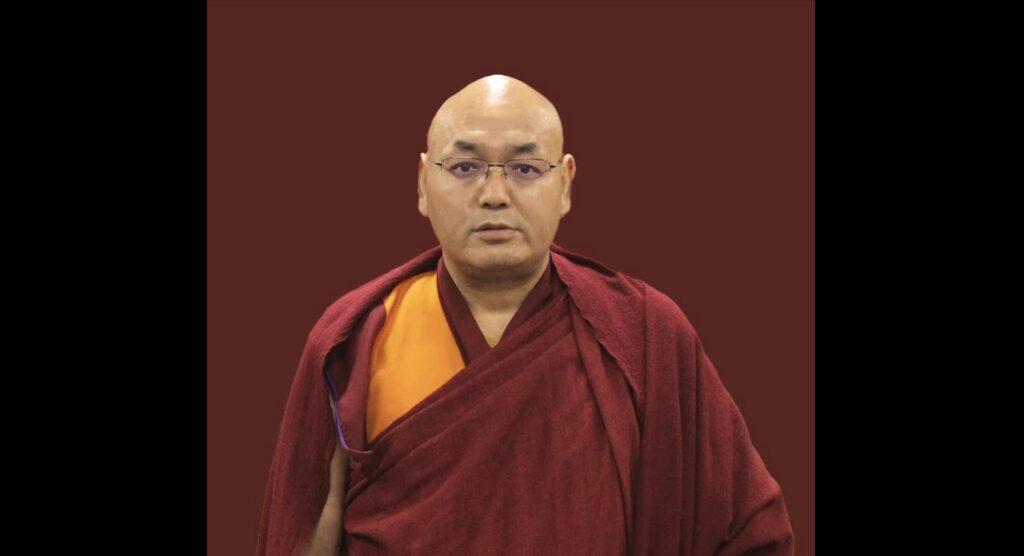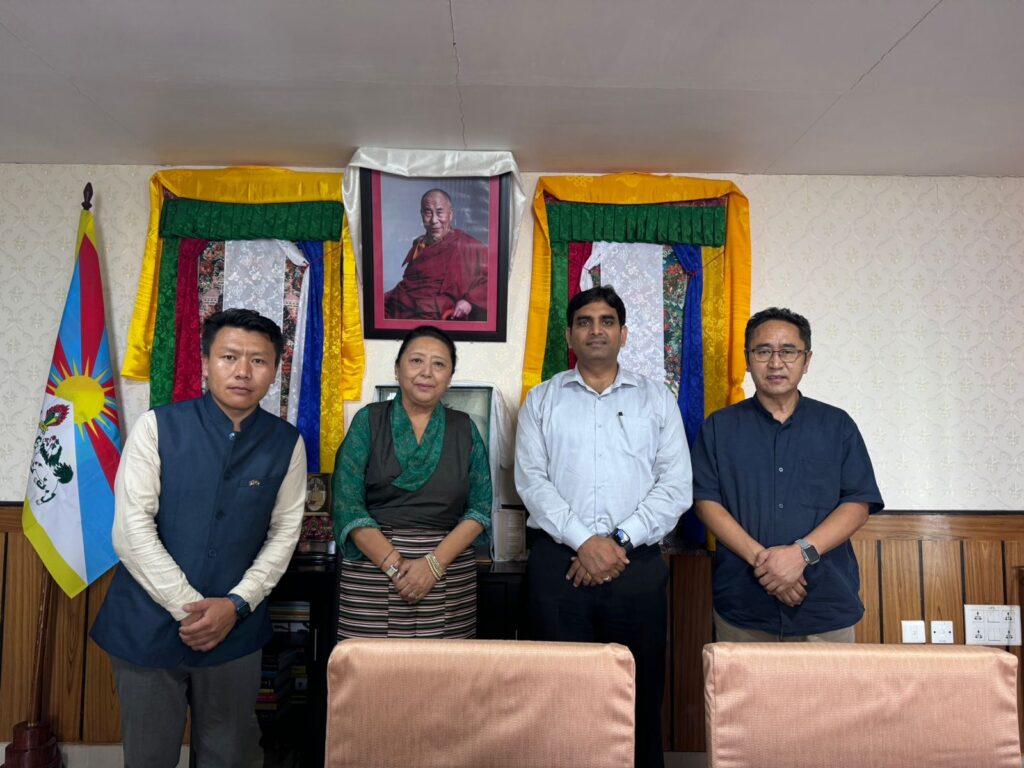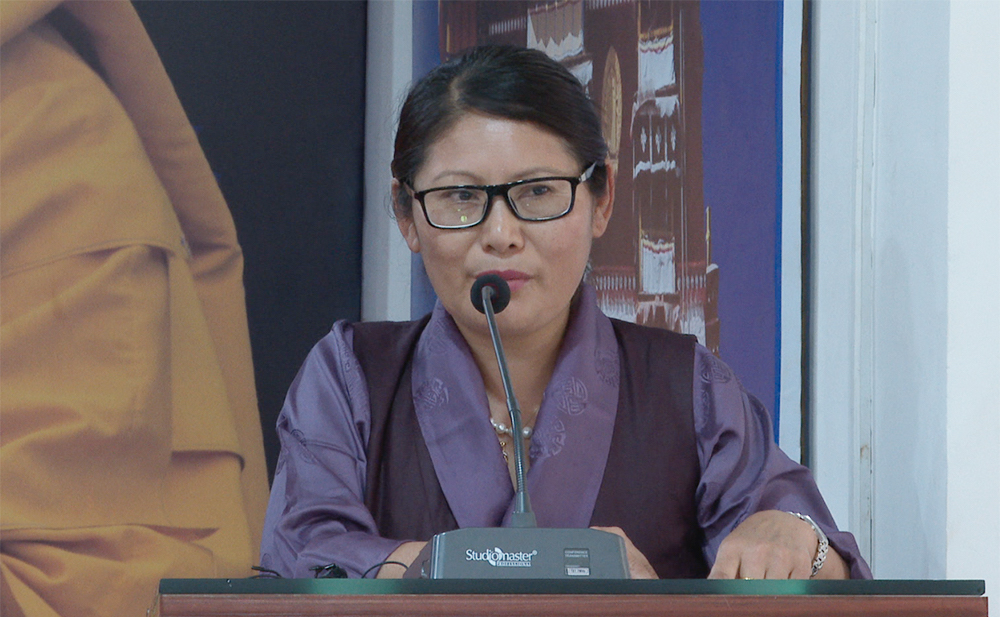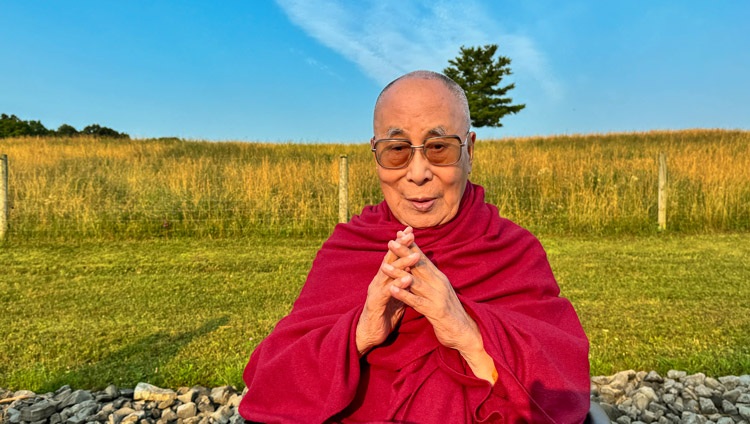FESTIVALS: Tibetans say Happy New Year! Wednesday, 6 February 2008, 10:49 a.m.
 Dharamshala: Losar is lesar! (Losar is new work.) As a common saying goes, Tibetans in and outside Tibet are on a shopping spree, preparing for the whole gamut of rituals and customs of New Year celebrations, beginning 7 February.
Dharamshala: Losar is lesar! (Losar is new work.) As a common saying goes, Tibetans in and outside Tibet are on a shopping spree, preparing for the whole gamut of rituals and customs of New Year celebrations, beginning 7 February.
Historians say the celebration of Losar can be traced back to the pre-Buddhist period in Tibet.
From a ceremony to propitiate “spirits, deities and protectors”, Losar celebration has gradually evolved into an annual Buddhist festival.
According to Tsepak Rigzin, the author of “The Festivals of Tibet”, The festival is said to have begun when an elderly woman named Belma introduced the measurement of time based on the phases of the moon.
That celebration, which coincided with the flowering of the apricot trees of the Lhokha region in autumn, could have been the first of what became the traditional farmers’ festival.
Later when the rudiments of astrology, based on the five elements, were introduced in Tibet, this farmer’s festival became what we now called as Losar, New Year’s festival.
Historically, there were three major traditions for the celebration of Losar.
While one tradition celebrated Losar on the first day of the 11th month, another celebrated on the first day of the 12th month.
According to a third, i.e. the system of the 13th century Lama Drogon Choegyal Phagpa, the first day of the first lunar month is celebrated as Losar.
Apart from these three, a host of other traditions celebrated Losar at various times, corresponding to the local harvest seasons and customs–In some parts, Losar is said to be celebrated twice a year!
However, in the course of history, the Losar celebrated on the first day of the first lunar month became the standard practice–at least at the official level.
(In an effort to help Tibetan youth know their rich cultural roots, TibetNet will feature occasional articles on the festivals of Tibet, starting from those marked as holidays by the departments and offices of Tibetan Administration in exile.)

Losar Celebrations in the days of old Tibet.
For the monasteries in old Tibet, the celebrations for the Losar begin on the twenty-ninth day of the twelfth month. That is the day before the Tibetan New Year’s Eve. On that day the monasteries do a protector deities’ puja (a special kind of ritual) and begin preparations for the Losar celebrations.
The custom that day is to make a special noodle called guthuk. It is made of nine different ingredients including dried cheese and various grains. Also, dough balls are given out with various ingredients hidden in them such as chilies, salt, wool, rice and coal. The ingredients one finds hidden in one’s dough ball are supposed to be a lighthearted comment on one’s character. If a person finds chilies in their dough, it means they are talkative. If white-colored ingredients like salt, wool or rice are inside the dough it is considered a good sign. If a person finds coal in the dough it has much the same meaning as finding coal in one’s Christmas stocking; it means you have a “black heart”.
The last day of the year is a time to clean and prepare for the approaching New Year. In Lhasa, the first day of the new year is officially called “Lama Losar”. In the early dawn of this day, the monks of Namgyal Monastery offer a sacrificial cake (Tse- tor) on the Potala palace to the supreme hierarchy of Dharma protectors, the glorious goddess Palden Lhamo. Led by His Holiness the Dalai Lama, the abbots of three great monasteries, lamas, reincarnated monks, government officials and dignitaries join the ceremony and offer their contemplative prayers, while the monks of Namgyal Monastery recite the invocation of Palden Lhamo. After the completion of this ceremony, all assemble in the hall called Excellence of Samsara and Nirvana for a formal greeting ceremony. Seated on his or her respective cushions, everyone exchanges the traditional greeting, “Tashi delek”.
In order to wish His Holiness the Dalai Lama good luck for the coming year, consecrated long-life pills (tse-ril) made out of roasted barley dough are offered to him by the representatives of the three great monasteries, the two Tantric Colleges, etc. Then entertainers (garma) perform a dance of good wishes. And two senior monks stage a debate on Buddhist philosophy, and conclude their debate with an auspicious recitation composed especially for the event, in which the whole spectrum of Buddhist teaching is first briefly reviewed. A request is made to His Holiness the Dalai Lama and to all holders of the doctrine to remain for a long time amongst beings in samsarain order to serve them through their enlightened activities. The official ceremony of the day then concludes with a ceremonial farewell to the His Holiness, who then retires to his palace.
The second day of Losar is called King’s Losar (Gyalpo Losar), as officially the day is reserved for a secular gathering in the hall of Excellence of Samsara and Nirvana. His Holiness and his government exchange greetings with both monastic and lay dignitaries, such as representatives of China, India, Bhutan, Nepal, Mongolia and other foreign visitors.
Then from the third day onwards, the people and monks begin to celebrate and enjoy the festive season. In Tibet before the Chinese came, Losar was celebrated for fifteen days or more. In India today Losar is celebrated for three days.





